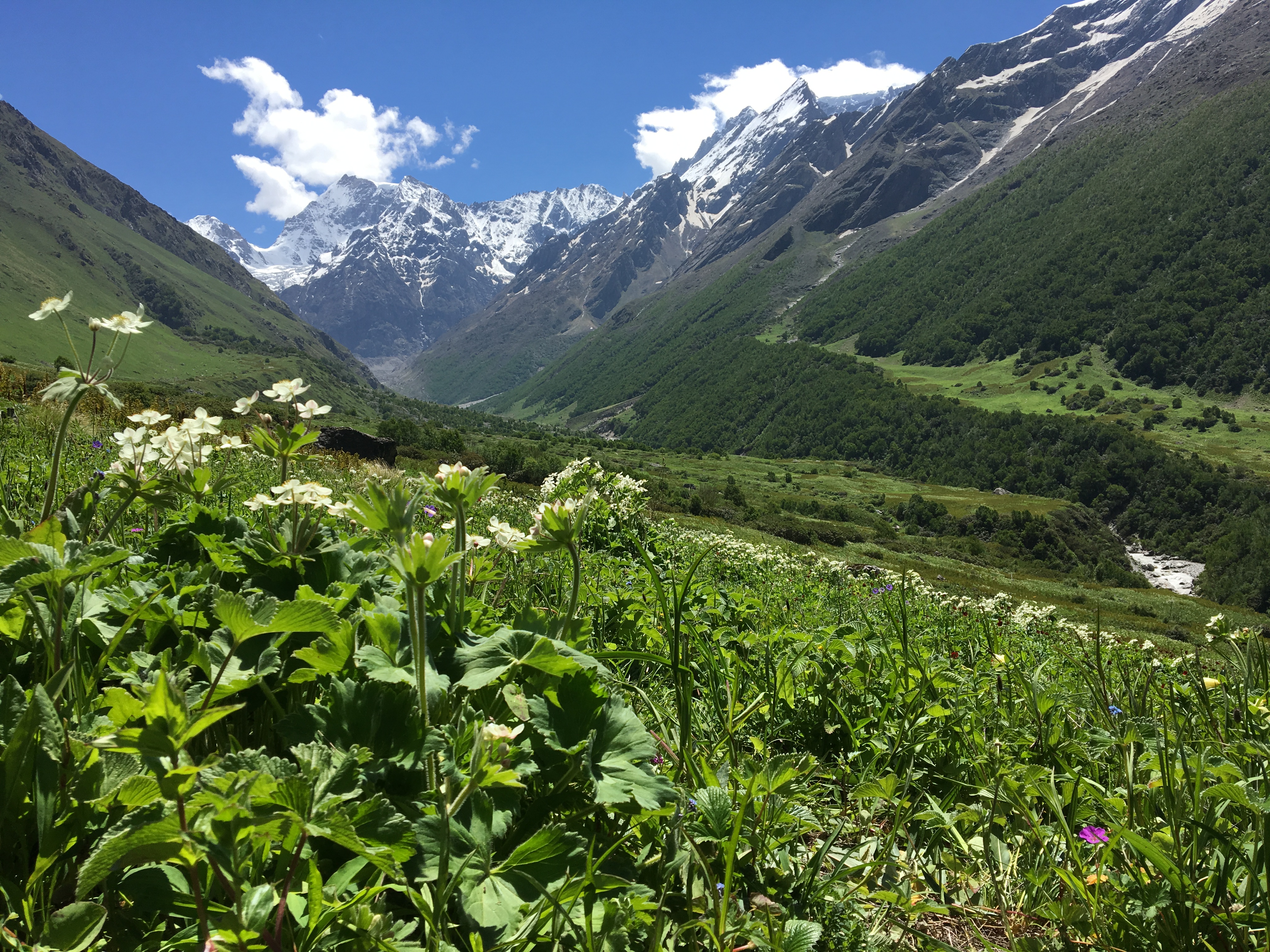In high mountain environments, plants live on a tight schedule. Unlike lowland habitats, mountaintops are colder, windy, and often less hospitable. These extreme conditions create a short growing season - a narrow window of warm temperatures for plants to grow, flower, and reproduce. In such a brief span, a plant’s survival depends on how well it attracts pollinators, sets seed, and secures the next generation—tasks in which flowers play a critical role.
Flower traits can change over time to cope with factors like temperature and moisture, and to better attract pollinators like bees and butterflies. Researchers from Dr. Meghna Krishnadas's group (The Community and Functional Ecology Lab) at NCBS & CCMB conducted a field-based observational study to understand how flower traits change with elevation in the Western Himalayas. They found that at higher elevations, flowers looked more conspicuous but more alike in their overall appearance. This study is a glimpse into how plants fine-tune their strategies to survive and reproduce in challenging environments, like the higher reaches of the Himalayas, where temperatures rarely go beyond 15°C.
“As you move higher, the environment changes rapidly. Temperatures drop, seasons get shorter, and the availability of resources – water and light – changes. This puts pressure on plants. Scientists can use these natural gradients as laboratories to ask: How do plants cope? Flowers are especially important to study because they are directly tied to a plant’s ability to reproduce. Their size, number, and structure can influence how well they attract pollinators or survive tough conditions”, said Mustaqeem Ahmad, the lead author of the study.
Mustaqeem and his field team conducted their study across three landscapes in the Western Himalayas, spanning elevations from 2,000 to 4,500 meters. At each elevation, they recorded species that were present and noted when and for how long each one flowered and how size, number, and overall structure changed with elevation.
They observed that flowers at higher elevations were bigger, which may be more eye-catching for a pollinator. But there was a trade-off: these bigger flowers had lower tissue quality. When the growing season is short, plants only have a limited window to reproduce. Investing more energy into making their flowers stand out—even if that means the flowers are not as tough—just to boost their chances of attracting pollinators could be an important survival strategy. As one came down to lower elevations, plants showed more variety in their flowers, including size, number, and appearance. This could be because the milder climate and more resources at lower elevations give plants more room to play around with their forms.
The team also found that flower appearance and flowering time did not go hand in hand. “This is surprising because scientists often expect these traits to be linked - for example, a large or flamboyant flower might be timed to bloom when pollinators are most active or when the weather is most favourable. But in this case, we found that how a flower looked and when it bloomed were seemingly influenced by different factors”, said Mustaqeem. The team suggests that flower traits were shaped by environmental stress and interactions with pollinators, while flowering time was most likely controlled by temperature cues.
“Our dataset is the first-of-its-kind to show how flower traits differ across individuals, populations, and elevations, showing how flowers may have evolved in response to different requirements. This kind of knowledge helps us explore how differences in flower traits influence which plant species grow together in diverse environments, and how these traits might shape the way plant communities respond to climate change, said Dr Meghna Krishnadas, the principal investigator of the study.
Link to the study: https://besjournals.onlinelibrary.wiley.com/doi/full/10.1111/1365-2435.14748










0 Comments